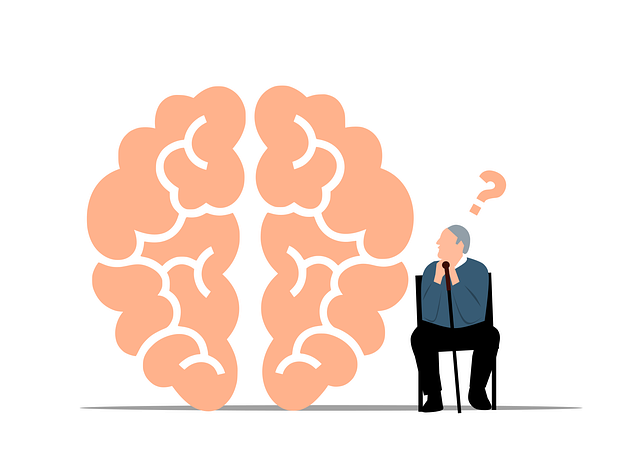Mental Wellness Journaling: Healing & Resilience with Colorado Springs Resources
Mental wellness is vital, impacting daily life and social interactions. In Colorado Springs, suicide…….
In the realm of mental health support, Colorado Springs Suicide Prevention Therapy (CSSPT) stands as a beacon of hope and resilience. This therapeutic approach is designed to tackle one of society’s most pressing issues: suicide prevention. The article aims to provide an in-depth exploration of CSSPT, its strategies, impact, and global reach. By delving into its historical roots, methodologies, and contemporary applications, readers will gain a comprehensive understanding of this critical field. Additionally, we will examine the economic, technological, and regulatory aspects that shape CSSPT’s landscape, while also addressing challenges and highlighting successful case studies. This analysis promises to offer valuable insights for professionals, researchers, and policymakers alike.
Colorado Springs Suicide Prevention Therapy is a specialized form of psychological intervention focused on identifying individuals at risk of suicide and providing them with evidence-based strategies to manage their mental health effectively. It incorporates various therapeutic techniques, including cognitive-behavioral therapy (CBT), dialectical behavior therapy (DBT), and crisis interventions. The core components include:
The roots of CSSPT can be traced back to the late 20th century when mental health professionals recognized the rising rates of suicide and the need for more proactive approaches. The concept evolved from traditional therapy models by incorporating elements of crisis intervention and community engagement. Over time, it has gained momentum, particularly in areas like Colorado Springs, where dedicated organizations have made significant strides in suicide prevention.
CSSPT is crucial in addressing a global public health concern. According to the World Health Organization (WHO), suicide is a leading cause of death worldwide, with an estimated 800,000 lives lost each year. This therapy plays a vital role in:
Colorado Springs Suicide Prevention Therapy has gained international recognition and adoption due to its success and structured approach. Many countries have adapted and integrated CSSPT models into their national health systems:
| Region | Adoption and Adaptation |
|---|---|
| North America | Widely adopted, with numerous organizations offering specialized training and services. |
| Europe | Various European nations have implemented CSSPT-inspired programs, focusing on community engagement. |
| Asia Pacific | Some countries in this region are pilot testing CSSPT, recognizing the need for culture-specific interventions. |
| Middle East | Limited adoption but growing interest due to increasing mental health awareness. |
Several global trends are influencing the development and direction of CSSPT:
The economic implications of CSSPT are significant, considering the substantial societal and healthcare costs associated with suicide. The market for CSSPT services includes:
Implementing CSSPT can lead to:
CSSPT contributes to economic systems by:
Technology plays a pivotal role in modernizing CSSPT:
Technological advancements in CSSPT have shown promising results:
In the future, AI integration may revolutionize CSSPT by enhancing risk assessment accuracy and enabling personalized crisis interventions. As technology advances, expect more innovative solutions to emerge, making CSSPT even more accessible and effective.
The development and delivery of CSSPT are influenced by various policies and regulations:
Policy frameworks shape CSSPT in several ways:
Despite its successes, CSSPT faces several challenges:
Criticisms of CSSPT include:
Overview: A local non-profit organization in Colorado Springs launched a comprehensive CSSPT program, focusing on community engagement.
Strategies:
Outcomes:
Setting: A high school in Sydney implemented CSSPT as part of their student welfare program.
Approach:
Results:
Context: A non-governmental organization (NGO) in Mumbai tailored CSSPT to the cultural context, addressing unique challenges faced by urban youth.
Adaptations:
Achievements:
The future of CSSPT holds immense potential in several areas:
Several emerging trends are shaping the future of CSSPT:
To capitalize on future prospects, CSSPT stakeholders should:
Colorado Springs Suicide Prevention Therapy represents a powerful tool in the global fight against suicide. This article has provided an extensive analysis of CSSPT, highlighting its historical context, core components, and significant impact worldwide. By understanding its mechanisms and challenges, we can appreciate the importance of continued support, research, and adaptation.
CSSPT’s future prospects are promising, with technological advancements, cultural adaptations, and community engagement leading the way. As we navigate these trends, it is crucial to maintain a balanced approach, ensuring that CSSPT remains evidence-based, culturally sensitive, and accessible to all who need it. Through collective efforts, we can build resilient communities that prioritize mental health and prevent suicide.
Q: What are the warning signs of suicide?
A: Warning signs include talking about wanting to die or having no reason to live, feeling hopeless, acting impulsively, withdrawing from activities, and displaying extreme mood swings.
Q: How effective is CSSPT in preventing suicide?
A: Research indicates that CSSPT can significantly reduce suicide attempts and rates of completed suicides. Early intervention and ongoing support are key factors in its effectiveness.
Q: Can CSSPT be adapted for different cultural contexts?
A: Absolutely. CSSPT is designed to be adaptable, allowing professionals to incorporate culturally sensitive techniques and perspectives while maintaining evidence-based practices.
Q: What role does technology play in CSSPT?
A: Technology enables access to therapy through online platforms, mobile apps, and virtual reality. It also aids data collection and analysis, contributing to improved treatment strategies.
Q: How can I help someone at risk of suicide?
A: Encourage them to seek professional help from a therapist or crisis hotline. Be supportive, active listener, and assure them that help is available. If the situation appears urgent, do not hesitate to contact emergency services.

Mental wellness is vital, impacting daily life and social interactions. In Colorado Springs, suicide…….